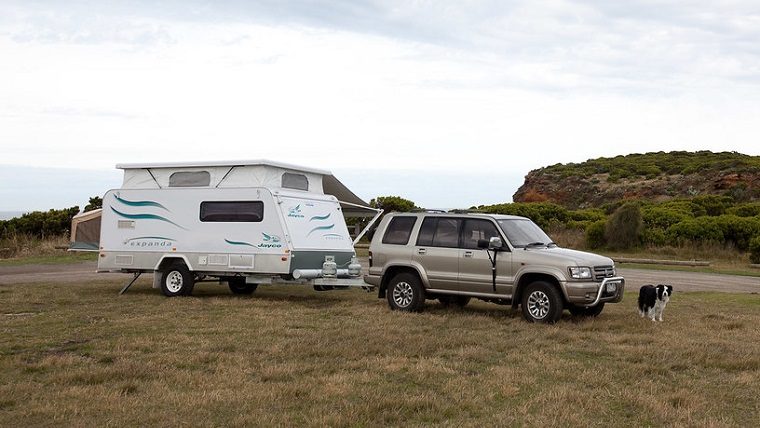 Photo: Cookie | Flickr
Photo: Cookie | Flickr
Driving a recreational vehicle is a lot different to driving a regular car, even if your usual ride is a very large SUV or pickup truck. You probably don’t need a special license to drive an RV even if you’re completely new to it, so make sure to follow these simple RV driving tips before you hit the road and enjoy the outdoors.
Brake early
Your RV is likely significantly heavier than anything you’ve driven before. Remember to give yourself a lot of room to brake to avoid potential collisions: start slowing down early before coming to a traffic stop, and leave plenty of space between you and cars ahead. When driving downhill, stay in lower gears so that you can use engine braking to slow down and prevent your brakes and rotors from fading.
Take wide turns
The longer and wider the vehicle, the longer and wider your turns need to be. This is especially important when taking right turns, as you’ll be up against the curb. Keep an eye on your rearview mirrors, stay as close to the center lane as possible, and take your time. Don’t try to hurry because you are concerned about holding up cars behind you. It’s more important that you take it easy and avoid any damage.
Related: Learn about the different types of RVs
Know your height
Height is no concern while driving a regular car, but it’s something you will need to keep in mind while driving an RV. Most RVs are between 10 and 14 feet in height, and if you can’t seem to remember the height of yours, write it down on a piece of paper and tape it to the dash. Most interstate overpasses are 16 feet in height, so you should have no trouble there, but many drive-thrus often have a clearance of only 10 feet. Keep this in mind when you take a break to eat.
Practice
Even if you’ve read up on everything you should know about driving an RV, you should still go on a practice drive before you start your road trip. Find a large, empty parking lot or a dirt field, put down some cones, and practice maneuvering and parking. Get a feel for its turning radius and braking distances, and test your visibility while backing up.
Related: Eco-friendly RV tips









